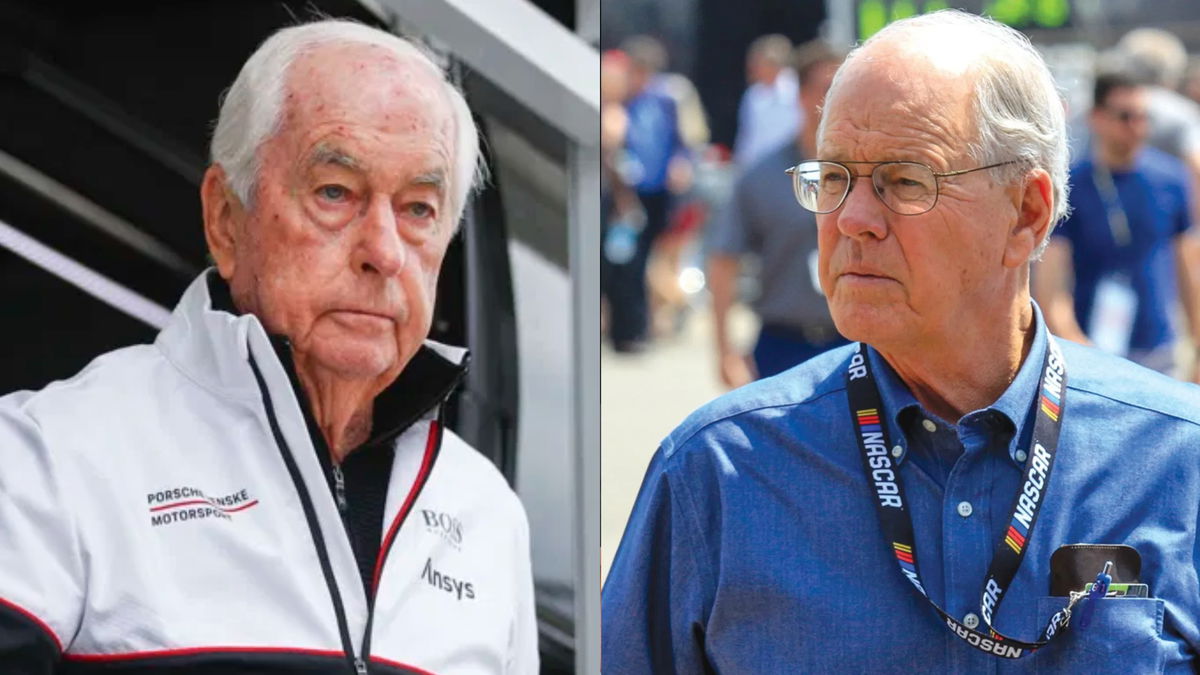
Imago
Image Credits: Imago

Imago
Image Credits: Imago
NASCAR has proven in recent years that it can still deliver major TV moments. The 2023 Daytona 500 averaged over 8 million viewers. This was the highest for the race in five years, while other marquee events like the Coca-Cola 600 and Talladega consistently topped 4 million on network television. Meanwhile, Roger Penske’s IndyCar portfolio has enjoyed its own milestones. The Indianapolis 500 under his stewardship hit 5.51 million viewers in 2023 and climbed again in 2024, aided by stronger promotional pushes and more broadcast coverage. These successes suggested both series could ride a rising tide, but the next set of figures would show a different reality that few anticipated.
Watch What’s Trending Now!
FOX has emerged as a key ally for Penske and IndyCar in recent times. It has secured exclusive broadcast rights, heavily promoting the series across its sports programming, and leveraging cross-network synergy. NASCAR, for its part, invested in new formats like the Chicago Street Race. They expanded digital content and opened its media model to streaming partners in search of younger demographics. Early hopes centered on these moves delivering both bigger audiences and fresh sponsorship appeal. But as this season’s side-by-side numbers with IndyCar prove, the return on these investments has not played out the way NASCAR envisioned.
ADVERTISEMENT
NASCAR slips as IndyCar raises expectations
This year, NASCAR has dropped below 2 million viewers for the fifth time with the latest Watkins Glen race. The 2025 Cup Series’ weekly audience has trended down despite a mix of broadcast, cable, and streaming exposure. The Glen race also recorded the third-lowest Cup Series audience of 2025 so far.
Prime Video’s debut run of Cup races pulled in younger demographics but smaller overall totals. These averaged around 2.1 to 2.7 million, depending on the event. TNT’s midseason slate averaged near 2.1 million, trailing early-season cable races on FS1. Pocono’s Prime broadcast dipped roughly 22 percent from its USA Network number the year prior. Meanwhile, Watkins Glen posted only a slight gain over 2024. These patterns pushed the season’s average below recent benchmarks, signaling a decline in NASCAR’s reach despite targeted efforts to modernize its audience base.
On the other hand, IndyCar’s 2025 profile tells a different story. Under FOX’s full-season deal, races have not fallen below 500,000 viewers. This is a mark not achieved in at least a decade if maintained through the year. Portland’s 708,000 average marked the fourth straight race to clear the 700K threshold. Meanwhile, the Indianapolis 500 soared to 7.01 million, its strongest viewership in 17 years. While early-season expectations for IndyCar were higher still, the stability of its weekly floor now outpaces its stock-car counterpart, giving Penske’s series a stronger pitch to sponsors and a steadier base for future growth.
ADVERTISEMENT

ADVERTISEMENT
If 2025’s trajectory revealed by the statistics, holds, NASCAR may close the year with one of its lowest average audiences in recent history. Meanwhile, IndyCar could finish with its most stable season in over a decade. Without adjustments, the gap in perceived momentum will likely grow, with open-wheel racing leveraging its newfound floor and NASCAR seeking ways to reclaim lost ground without sacrificing its younger digital audience.
ADVERTISEMENT
Lawsuit against NASCAR and CEO Jim France continues
Charlotte car racing isn’t just about fast laps. It’s now at a legal crossroads. In October 2024, 23XI Racing (co-owned by Michael Jordan and Denny Hamlin) and Front Row Motorsports filed a federal antitrust lawsuit against NASCAR and CEO Jim France. The teams argue that NASCAR operates a closed system dominated by the France family. They are enforcing restrictive charter agreements, controlling tracks, parts supply, and even competitor leagues.
NASCAR fired back with its own countersuit in March 2025, labeling the two teams’ coordinated actions as elements of an illegal cartel. NASCAR claims the plaintiffs engaged in media manipulation, pressured broadcast negotiations, and even threatened event boycotts to gain leverage. A judge initially granted the plaintiff teams a preliminary injunction to keep their chartered status for 2025. But that was reversed on appeal. As of mid-2025, both teams must compete as open entries in races, with legal wrangling intensifying ahead of a scheduled December courtroom showdown.
Under NASCAR’s charter system, teams that refuse to sign the 2025 agreement lose guaranteed starting spots and revenue shares. However, 23XI and FRM refused, prompting the lawsuit. They cite NASCAR’s ownership of tracks, supplier control, and exclusionary clauses as anticompetitive. NASCAR counters that the teams are leveraging the courts to secure better financial terms and that similar exclusivity provisions are common in professional sports.
ADVERTISEMENT
Recently, the court denied the teams’ request for a temporary restraining order. This would mean that drivers must qualify as open entries for now. Despite the setback, co-owner Denny Hamlin remains defiant. The co-owner was confident that all would be exposed, promising answers at the December trial. One thing is clear: This battle isn’t just about race cars. It’s shaping how motorsports balances governance, fairness, and commercial survival.
ADVERTISEMENT
ADVERTISEMENT
ADVERTISEMENT

